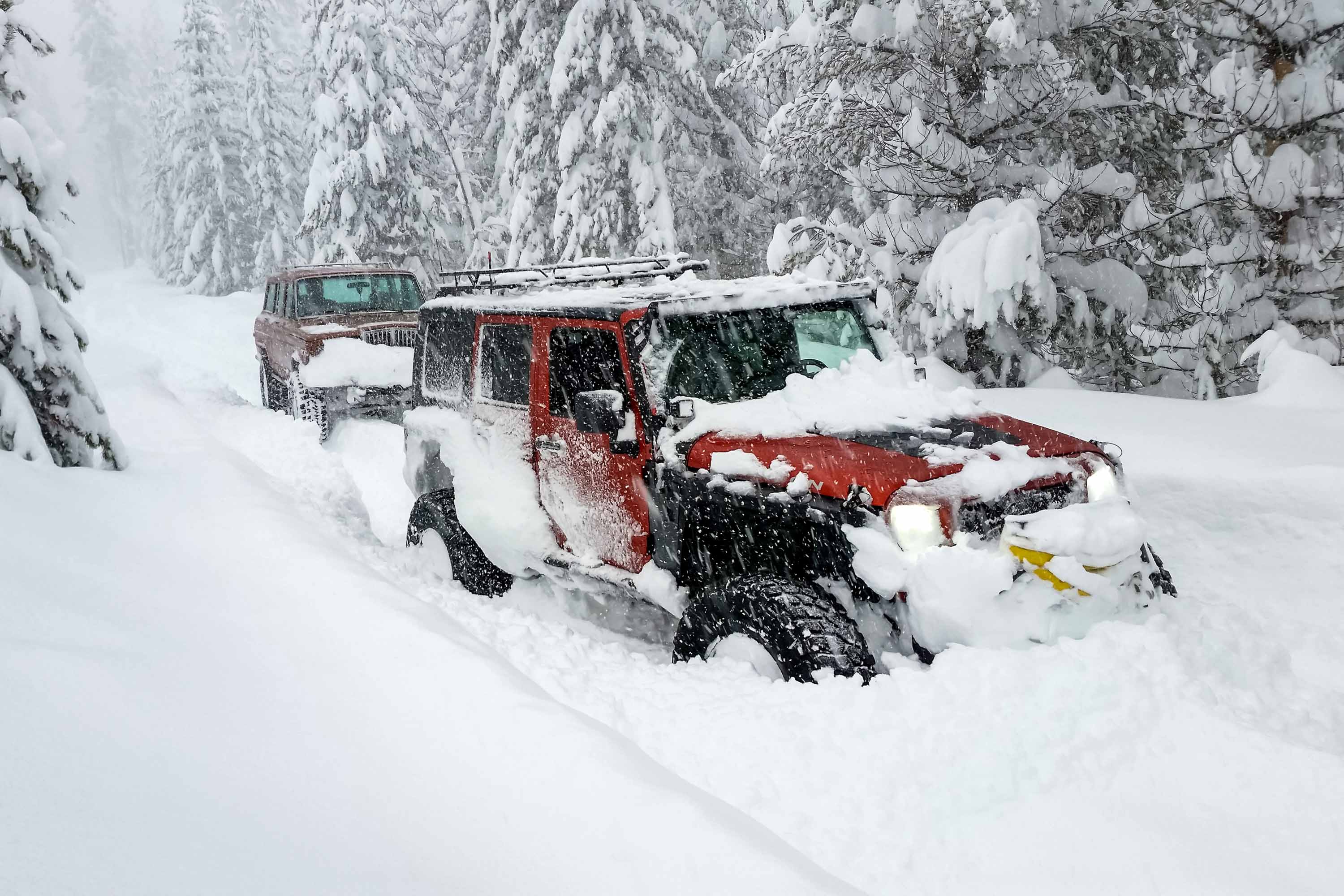Day trips driving scenic travel routes in the mountains during the summer and fall months are a great way to relax and enjoy everything nature offers. Exploring backroads can bring unexpected joys and seldom cause concerns related to making one’s way from Point A to Point B.
However, when winter arrives, those docile backroads and two-track trails that took mere minutes to drive a mile in the summer can take hours and pose some significant driving challenges because of snow. The deeper the snow, the more difficult and dangerous the driving becomes.
Top Snow Wheeling Tips

While tackling backroads in the dead of winter isn’t appealing to most drivers, there are those who embrace the white stuff and the thrill of navigating along backcountry tracks buried under feet of cold, fluffy powder. Among those is Jeremy Evans, owner and chief tech of Technique Vehicle Outfitters, a premier 4×4 and overland vehicle upfitter in Bend, Ore.
Bend is located at the eastern base of the Cascade Mountains. It regularly gets more than 15 feet of snow a year in many areas because of the prevailing westerly winds from the Pacific Ocean.
Evans, along with many of his 4WD-owning friends and customers, has spent years of winter weekends wheelin’ in the white blanket covering the Cascades. They have also made a number of snow rescues over the years where drivers ended up buried in the deep snow.
So, I sat down with him to get an expert’s advice on what it takes to outfit a vehicle to have fun navigating deep snow while reducing the chances of “the big stuck.” Here’s the wisdom he shared with me.
Never Go Snow Wheeling Alone




“First and foremost, never go driving into the snow-covered backcountry alone in the winter,” Evans advised. “Almost all of the [snow] rescues I’ve ever had to go on were because somebody went by themselves.
“Make sure you let several people know exactly where you are headed and what time you expect to return home. Communications in the backcountry can be spotty or none at all. So making sure someone back home knows there’s something amiss if you aren’t back by a certain time and can take the appropriate actions to find you,” he added.
Driving Technique for Deep Snow




“Another critical aspect of driving in snow is your right foot,” Evans noted. “The throttle is not usually your friend when the snow starts piling up. Where people mess up driving in deep snow is keeping their foot on the throttle when the tires start spinning.
“When that happens, stop! Lift off the throttle. If you feel the rig drop, lift that right foot. Everybody wants to power out of that. Every time they want to power out, you’re not in charge — the snow is. If your vehicle starts to drop, lift. If you lift throttle, it’ll coast and pick you up.
“Always remember that a spinning tire in snow has no flotation or traction. On the other hand, a rolling tire has a ton of flotation and traction.”
Best Tread for Deep Snow
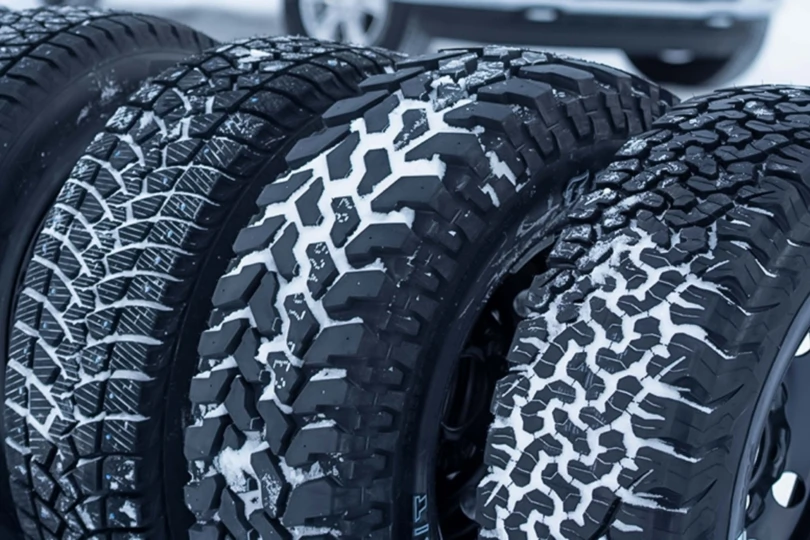



“We’ve found tire selection for navigating in snow that’s more than 2 feet deep is best done with a mud-terrain-type tire. Dedicated snow tires work great in shallower snow and over plowed roads, and all-terrains work well in snow up to a foot or so deep. But in deeper snow, 2, 3, 4 feet deep, or deeper, you want that paddle effect — and flotation — mud tires provide,” Evans noted.
“The tires need to be able to move larger quantities of snow and then to unload. What you want is an aired-down mud-tire that keeps snow in the lugs for about one-and-a-half turns, and then clean out and get another fresh load of snow in the tread.” Evans added. “Remember, a tire has no traction on snow. The traction in snow comes from snow sticking on to snow.”
Top-Rated Tires for Deep Snow
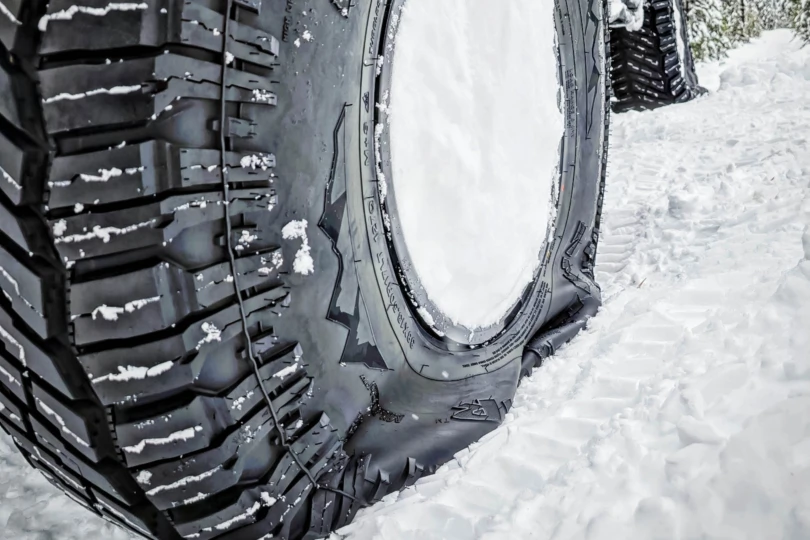



“Hybrid tires with big, open outer lugs and all-terrain-type inner lugs work the best out here. The big outer lugs move large quantities of snow while the tighter intersection in the middle packs up and grabs the snow,” Evans said.
“That’s why a lot of us run the Milestar Patagonia M/T-02 in the winter. The M/T-02 has been an incredible winter performer over the years. Out here snow wheelin’ in the Cascades, they’ve been just magic, especially since we drive to and from the trail.
“Another couple of hybrid standouts has been the Yokohama Geolandar M/T G003 and Mickey Thompson Baja Boss M/T. I love the Baja Boss M/T for spring snow, which is denser, icier, and harder, and that tire’s hyper-aggressive tread does well in what we call Cascade Concrete-type deep snow conditions.
“But, overall, the Patagonias have been amazing in deep, fluffy snow. They basically paddle out like a paddle tire, but they don’t sink you. They’re a lot more forgiving. You can almost always just back up when you start to lose forward momentum.”
Deep Snow Traction Is All About Tire Pressure
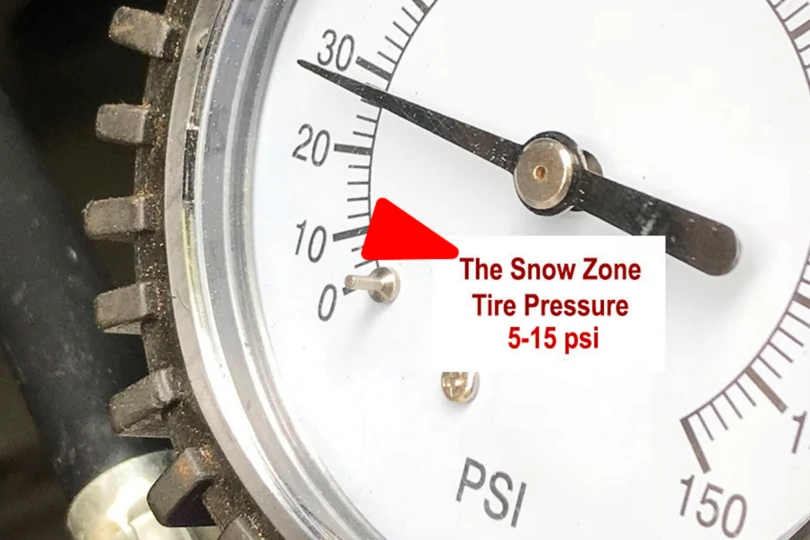



“Being able to drive in snow that’s more than hub deep requires paying very close attention to tire pressures. It’s always a volume versus pressure equation every time, and then adding in the weight of the vehicle,” Evans said.
“For example, let’s say the snow is two feet deep, you’re in a newer 4Runner on 285/65R18s BFG All Terrains T/A KO3s or some similar tires. Typically, should almost immediately drop tire pressure down to 12 to 15 psi to be able to float around and get good traction.”
“We had a Ram Prospector XL Cummins on 40s, and we got that thing all the way down to 4 psi, and we’re whomping around in 7 feet of snow. It was pretty much submarineing everywhere. It was so cool!
“But the right tire pressure always depends on size,” Evans added. “We have guys on 35s that’ll go all the way down to 2 psi. But most of the time, the Land Cruisers, Jeeps, 4Runners, and others in our group are riding on 38s and 40s when we go down to those single-digit tire pressures. There just isn’t as much volume in the tire.
“So the ‘best’ tire pressure is really dependent on the weight of the vehicle, the size of the tire, and the construction of the tire. It takes some experimentation with your own vehicle to get the best combination of tire pressure and tire for driving in deep snow.
“Keep in mind, a big truck with a small tire is going to need tire pressure. There’s only so far you can air down before it’s squishing out the tire and losing a bead. But a light vehicle with a big tire can be run with almost no pressure in deep snow,” Evans concluded.
Best Wheels for Wheelin’ in Deep Snow
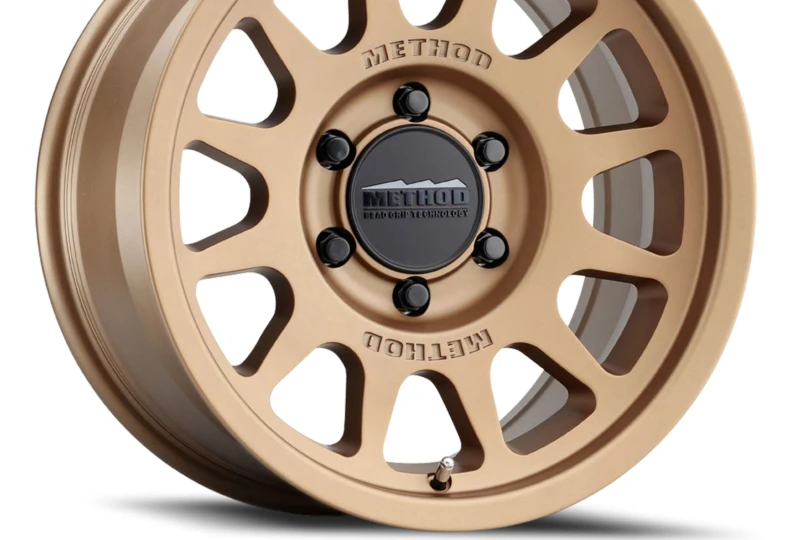



“Running low tire pressures can lead to popping a bead as the tire is rolled off the rim of the wheel — or it spins on the wheel, damaging the valve stem.
“One wheel that the majority of my customers and friends run during the winter are Method Bead Grips. We’ve been running them out here for years and years, and they just kill it in snow wheelin’,” Evans said.
“ As Method Race Wheels website says, ‘The integrated Bead Grip grooves, found on both the inner and outer bead seat, engage the tire bead for a stronger hold under extreme side load and lower air pressures. The wheel’s ‘safety hump’ also gets a more aggressive profile which further stabilizes the tire bead in the seat.’ Those double-bead seats keep the tires locked on the rim down to those single-digit tire pressures we run when wheelin’ in deep, deep snow. They are an incredible wheel,” Evans added.
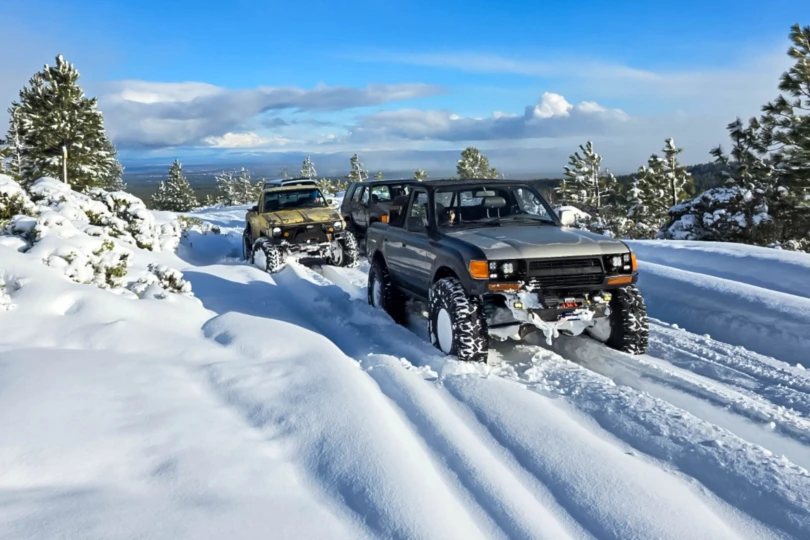



Final Thoughts: Snow Wheelin’
As the depth of the snow rises above the middle of the wheel, remember that tire flotation is your best friend in deep snow. Drop the tire pressure, starting around 15 psi. Think inverse: As the snow depth rises, tire pressures drop.
Driving in deep snow is much like driving in soft sand. Tires with lugs provide a paddle effect, helping propel you forward. Also, remember a heavy right foot is trouble when forward momentum slows.
If you are the adventuresome type who loves wheelin’ in the deep, deep snow with friends, consider investing in a set of quality off-road wheels with some sort of bead retention system to prevent rolling a tire off the rim when tire pressures drop below 10 psi.
Keeping a constant eye on tire pressures, and adjusting for both the weight of your vehicle and the way the tires are responding to the changing conditions will help get you to your destination — and back — when the snow gets deep.
Read the full article here




